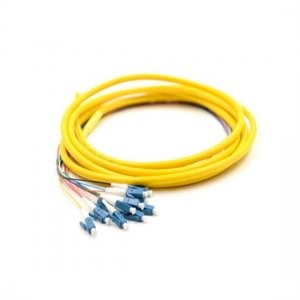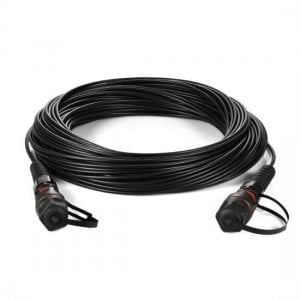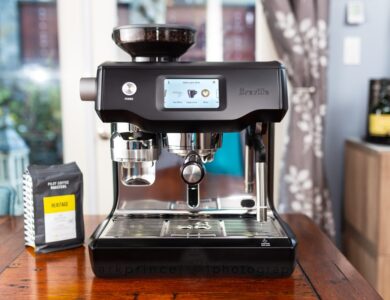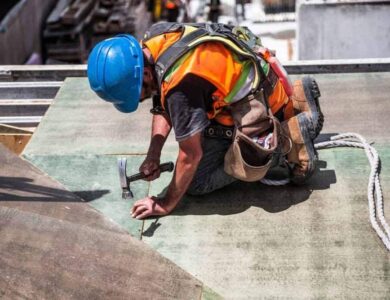How to Choose the Right Optic Fiber Cable to Meet the Needs of Indoor Applications?

We’re living in a connected world. So, how do we ensure a strong connection? Something as small as an optic fiber cable or fiber patch cable can help. Choosing the correct one for indoor applications is essential for best performance, reliability, and safety whether installing a communication network within a building, constructing a data center, or adopting fiber to the Home (FTTH).
Let’s look at the essential factors that can help you select a fiber optic cable for your indoor applications.
Determine the Fiber Type
The first step in choosing the proper fiber optic cable is finding the suitable fiber type. Think about whether your network application calls for single-mode or multi-mode fiber. Multi-mode fiber is commonly utilized for interior and short-distance applications. However, single-mode fiber is better suited for outdoor and long-distance applications. Understanding your network’s requirements can help you select the best fiber type.

Types of Fiber Optic Cables Based on Communication Channels
It is essential to examine the type of communication channels while selecting the correct fiber optic cable for indoor applications.
Simplex Fiber Optic Cables
Simplex fiber optic connections transmit data in only one direction. They are made up of a single strand of plastic fiber that is encased in an outer jacket. These cables are frequently used in automated speed and boundary sensors, digital data readouts, and interstate highway sensor relays. The core diameter of simplex cables is either 8 or 10 microns. They are useful for building up networks that need data transmission in a single direction across great distances because of their one-way data transfer capacity.
Duplex Fiber Optic Cables
Two fibers are arranged in a zip-cord pattern in duplex fiber optic cables. One fiber is in charge of transferring data in one direction, while the second fiber transmits data in the other way. Duplex cables are further classified into two kinds.
Half-Duplex Fiber Optic Cables
Signals are transmitted in both directions using half-duplex fiber optic connections. Data, on the other hand, can only flow in one direction at a time. In video conferencing systems, for example, data is broadcast back and forth.
Full-Duplex Fiber Optic Cables
Full-duplex fiber optic connections allow data to be sent in both directions at the same time. It implies that data may be delivered and received simultaneously, enabling efficient and real-time communication. Full-duplex cables are commonly employed in high-speed networking applications, such as data centers and business networks.
Determine Fiber Counts
After identifying the fiber type, the following step is to determine the needed fiber counts for your network architecture. Backbone fiber optic cables may need more fibers, ranging from 24 to 288 cores, whereas distribution cables have fewer fibers. Typically, 1 or 2 cores are adequate for last-mile FTTH drop cables. Assess your network’s requirements to identify the best fiber counts.

Consider the Application Environment
Look for cable qualities such as flame retardancy, low smoke, and halogen-free (LSZH) for interior applications. To verify compliance, look for the cable’s flame retardant class and LSZH sheath material. Consider flame-retardant cables that are smoke-free or non-toxic combustible (LSZH) in pipelines or forced ventilation zones.
Use flame-retardant, non-toxic, and smokeless cables, often known as riser cables, in exposed interior situations. Tight-buffered fibers are also preferred for interior applications because of their superior mechanical performance, which includes a small bend diameter, ease of stripping, and flexibility.
Indoor Applications that Require Optic Fiber Cable
Optic fiber cables are used in various interior locations where stable and fast communication is required.
- These cables link servers, switches, and storage devices in data centers, guaranteeing efficient data transfer and supporting the overall functioning of the infrastructure.
- Optic fiber cables are also used in office buildings to provide seamless communication between departments and workstations, facilitating operations such as file sharing, video conferencing, and cloud-based applications.
- Educational institutions also use optic fiber cables to provide high-speed internet connection and to allow e-learning platforms. These connections enhance the educational experience by facilitating communication between classrooms, administrative offices, and campus infrastructure.
- Healthcare institutions use them to transfer patient records and medical imaging data to enable real-time communication between healthcare experts, resulting in more efficient diagnoses and patient care.
Connectivity and Future Expansion
Consider additional variables, like connectivity choices and potential future growth, in addition to the criteria outlined above. Check that the fiber optic cable you choose is compatible with the connections, fiber adapter, and equipment you want to utilize.
It will allow for more smooth integration and reduce compatibility difficulties. Furthermore, consider the possible requirement for future network growth and scalability. Choose cables that allow for simple updates and extensions without interfering with the current infrastructure.
Consulting with professionals and reliable vendors can also be beneficial in determining the best fiber optic cable for your unique requirements.

When it comes to interior applications, the correct fiber optic cable can make or break your communication network’s efficiency and efficacy. So, put in the time and effort to make informed decisions and consult with experts.
Looking for high-quality fiber optic products and solutions for indoor applications? Browse the products and services at Fibermart! Their experts understand the importance of reliable cables and proper installation for safe and high-speed data transmission. They have products for all budgets and needs. No matter your industry, their team can help you pick the best fiber optic products.
At Fibermart, you can find a wide range of products, including a fiber patch cable, optical amplifier, MTP trunk cable, fiber splitter, and much more, all at affordable rates. If you have any questions, their experienced experts are ready to assist you with their extensive knowledge and expertise.
Contact them now or shop online!



